How to choose a siphon for the sink and what to look for
The choice of siphon is a crucial stage in the arrangement of new plumbing, since this part performs a number of important functions. However, due to the large range of these devices, for many it becomes a problem. Therefore, below we consider what types of sinks there are, and also how to choose a siphon for a sink in a given case.
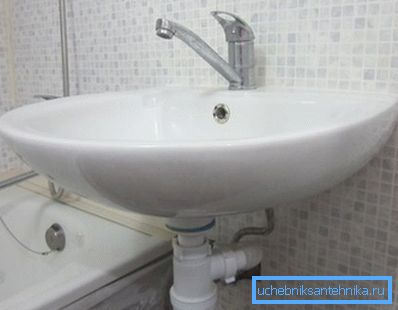
General information
First of all, let us consider why a siphon is needed at all, and what tasks are assigned to it?
So, this device performs the following functions:
- Provides a conclusion of waste water to the sewerage.
- It forms a water trap, which prevents the penetration of sewage fumes into the room.
- It prevents clogging of sewage pipes, as large debris remains in the drainage system, which is easy to clean with your own hands.
Thus, the operation of plumbing fixtures largely depends on the drainage system, so its choice deserves no less attention than the choice of the washbasin itself or the sink.
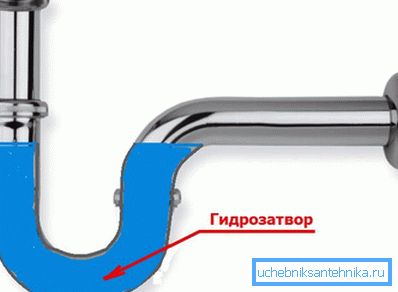
Types of designs
Currently, siphons are of various types, however, by the type of construction they can be classified into:
| Tubular | They represent the simplest design, made in the form of a bent pipe. |
| Bottle | A more complex design that looks like a bottle. The main advantage is the ease of cleaning the drain. |
| Corrugated | Made of flexible corrugations, which is fixed with plastic clips. |
| Flat | As a rule, a flat sink siphon is installed above the washing machine. Accordingly, its design is dictated by the economy of space under the sink. |
Below we take a closer look at all these types of sink siphons.
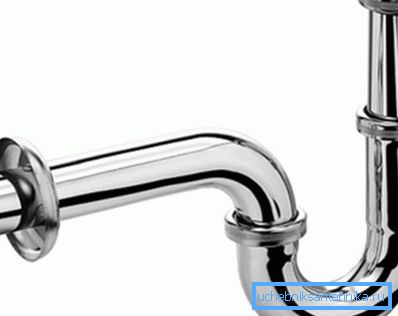
Tubular
As a rule, such products are used for washbasins in bathrooms, as they often have to be cleaned in the kitchen, and disassembling the tubular structure is not very convenient. It should be noted that they look quite attractive, especially if the tubular siphon for the chrome sink is made.
I must say that such siphons, as a rule, have a shallow water seal that can evaporate if you do not use the plumbing fixtures for a long time. Among other features of models of tubular type, it can be noted that they, as a rule, do not have overflow.
Tip! Nickel-plated tubular siphon for the sink is more expensive than plastic. Accordingly, if the structure is hidden in the cabinet, it makes sense to purchase a plastic product.

Bottle
To date, this design is perhaps the most common. It is more difficult to install a bottle siphon on your own than a tubular one, but, as mentioned above, it is easily disassembled for cleaning. To do this, you just need to unscrew the cover located below.
Among other advantages of this design, it is possible to highlight the fact that a drain from a washing machine and a dishwasher can be connected to it using special fittings. This will avoid the installation of additional sewers.
The price of such products is quite affordable, and, you can buy them in any plumbing store. Usually they are installed in kitchen sinks, thanks to the ease of cleaning.

Corrugated
The flexible siphon for the sink is a fairly simple structure, which consists of a discharge, corrugated hoses and an adapter for connecting to a sewer pipe. Its main advantage is ease of installation.
As a rule, corrugations are used in cases where it is not possible to install a rigid structure.
This is due to the fact that, along with the advantages, it has some disadvantages, such as:
- Instability to mechanical stress.
- Short life;
- Instability to high temperatures;
- Quickly clogged;
- It is difficult to clean - to remove the garbage it is necessary to completely dismantle the structure.
Thus, if there is an opportunity to install a metal or rigid plastic siphon for the sink, it is not necessary to install a corrugation.
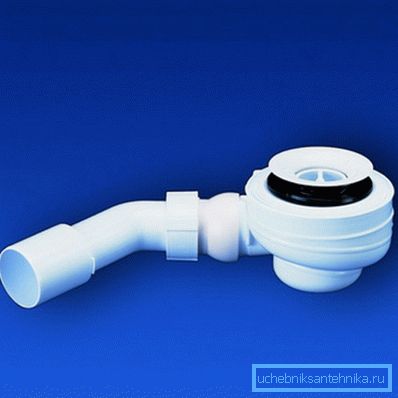
Flat
As mentioned above, a low sink siphon is used in cases where it is necessary to ensure maximum free space under the sink. Moreover, they are installed on special flat sinks with a special exhaust system.
Most often, the need for such plumbing, as mentioned above, occurs when installing a washing machine under it in order to save space. The only advantage of this design is compactness. However, such plums are often clogged, so they should also be installed only when necessary.
Selection features
So, we figured out what types of plums, in which cases it is better to use.
Now consider what to look for when choosing a product:
- The first choice depends on the sink sink. If it has a standard form, then pick up the siphon is not difficult. If the model is exclusive, then it is better to pick up the drain system immediately, in the same store.
- Another important selection criterion is the missing capacity of the device.. This parameter depends on the number of devices that are connected to the sewer drain. The more devices will be connected, the, accordingly, its section should be larger.
- If the drain is located in sight, you should also pay attention to the product design.. As mentioned above, an excellent option in this case is a chrome-plated siphon for the sink. In addition, copper products can be found on sale.
- The quality of the device, especially should pay attention to the joints and seals. They should not have any burrs. Rubber bands should be pistillate, otherwise the design will not be hermetic.
- The kit should contain detailed and clear instructions for assembly and installation of the product..
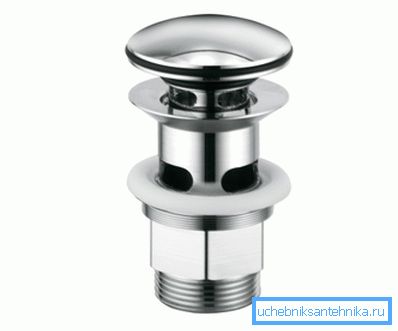
Tip! On sale you can find a device with an exhaust valve that allows you to block the drain for a set of water in the sink, and thereby save water. The drain is opened using a special lever, which is installed, as a rule, near the mixer.
Here, perhaps, all the main points that you need to know when choosing a siphon.
Conclusion
As we found out, there are several types of siphon designs, which should be selected depending on the type of sink and the characteristics of its operation. For example, for kitchen sinks, the main requirement for a sink is its ease of maintenance; in the bathroom, an important point is often the design of the product.
From the video in this article, you can pick up some additional information on the designated topic.